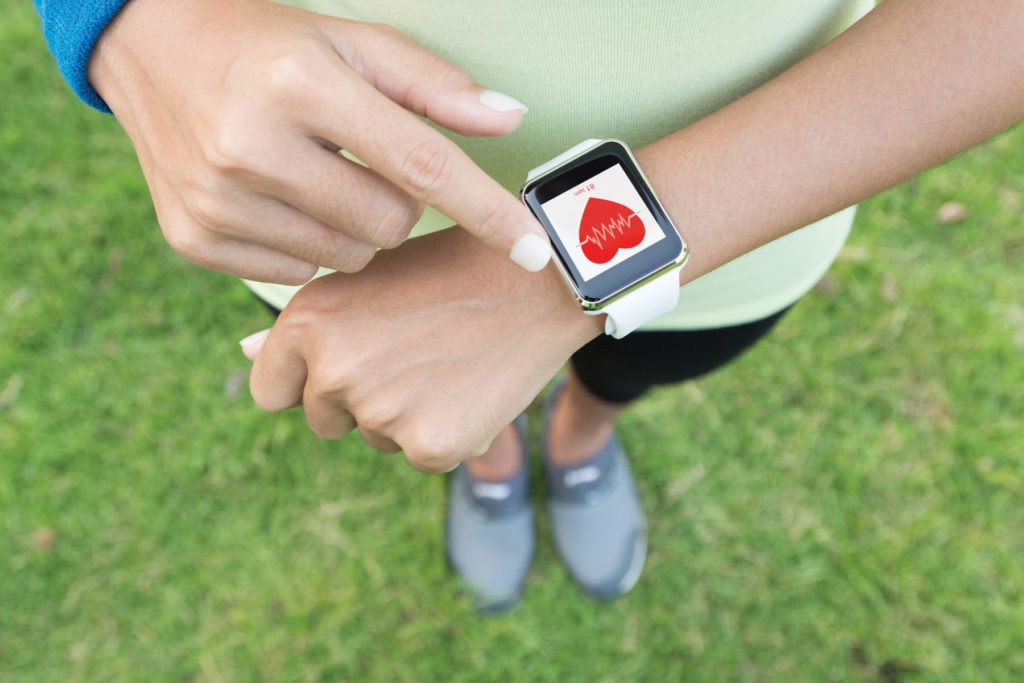TeleMed Text: Older Cardiac Patients Rely on Medical Apps
 A Medtronic study shows high use of app-based remote cardiac monitoring among older patients. The study evaluated 15,595 patients across 1,969 clinics with Medtronic pacemakers who were assigned a MyCareLink Smart app-based remote monitor. They found that 88.4% of patients of all ages who were prescribed this new technology used their smart devices to successfully activate their MyCareLink Smart mobile app, and 89.7% kept sending data to the Medtronic Network for 12 months. Nearly 90% of patients aged 71 and older use the app to transmit data, compared to 86.7% of patients aged 18-50 and 91% those aged 51-70, showing that age was not a factor when it came to using technology for health monitoring.
A Medtronic study shows high use of app-based remote cardiac monitoring among older patients. The study evaluated 15,595 patients across 1,969 clinics with Medtronic pacemakers who were assigned a MyCareLink Smart app-based remote monitor. They found that 88.4% of patients of all ages who were prescribed this new technology used their smart devices to successfully activate their MyCareLink Smart mobile app, and 89.7% kept sending data to the Medtronic Network for 12 months. Nearly 90% of patients aged 71 and older use the app to transmit data, compared to 86.7% of patients aged 18-50 and 91% those aged 51-70, showing that age was not a factor when it came to using technology for health monitoring.
“There is often a misperception that older patients aren’t adapting to newer technologies, but this study shows that is not the case,” says Khaldoun Tarakji, MD, MPH, electrophysiologist and Director of Clinical Electrophysiology Research at the Cleveland Clinic. Those who use the technology regularly, he notes, can reap many health and economic benefits, including faster time to treatment if the physician detects a problem with the pacemaker based on the transmitted data, or less time spent at a doctor’s office or clinic for regular pacemaker checks.
Sales Sector: 2014’s to 2016’s Costliest Drugs
Waltham, MA-based life sciences consulting firm Trinity Partners recently assessed the costliest drugs approved by the FDA between 2014 and 2016 using parameters of disease area, unmet need, and degree of innovation. Rare disease therapies indicated for pediatrics that require long-term dosing as first-in-class and first-targeted therapy status were found to be the most expensive. Nine out of 10 are priced at or above $200k per patient per year. In fact, eight out of the 10 costliest drugs are indicated for pediatric treatment, including Exondys 51, Spinraza, Cholbam, Kanuma, Orkambi, Strensiq, Myalept, and Vimizim. Only Cerdelga and Cyramza, the first targeted therapy for advanced gastric cancer, lack a pediatric indication, and nine of 10 also require long-term dosing.
The findings, published in a white paper, also revealed that drugs with first-in-class status offer companies pricing leverage and access to fast-track designation and other development mechanisms. Just under half of all drugs priced at or above $100K per patient, per year were granted FDA Fast-Track Designation or Accelerated Approval. And while these mechanisms are intended to expedite the arrival of new specialized therapies, they also lead to FDA approval of drugs that have not yet completed confirmatory studies.
As a case study, Biogen released robust Phase III data to support high-priced, Spinraza, several months after launch. Fortunately, the therapy did succeed in demonstrating clinically meaningful improvement in motor function. On the other hand, Roche’s bladder cancer drug, Tecentriq (priced at or above $100K per patient, per year) failed to meet its Phase III endpoint several weeks post-approval. The studies also revealed the market trends and the pitfalls involved in first-class drug development and sales.
Medical Device: Apple Watch Automatically Detects AF
 A new study shows that the Apple Watch can automatically detect atrial fibrillation (AF) using its built-in heart rate sensor and artificial intelligence. Photoplethysmographic (PPG) sensors, frequently found in smart watches, were coupled with and developed after 6,158 participants in the University of California San Francisco Health eHeart Study all used Cardiogram for the Apple Watch, training the watch to read abnormal heart rhythms caused by AF. The watch detects the condition with 97% accuracy.
A new study shows that the Apple Watch can automatically detect atrial fibrillation (AF) using its built-in heart rate sensor and artificial intelligence. Photoplethysmographic (PPG) sensors, frequently found in smart watches, were coupled with and developed after 6,158 participants in the University of California San Francisco Health eHeart Study all used Cardiogram for the Apple Watch, training the watch to read abnormal heart rhythms caused by AF. The watch detects the condition with 97% accuracy.
“Our results show that common wearable trackers like smart watches present a novel opportunity to monitor, capture, and prompt medical therapy for AF without any active effort from patients,” says senior study author Gregory M. Marcus. It’s also rumored that Apple will release a glucose monitor in a later version of the watch that will measure glucose using optical sensors.
Discoveries/Innovations: New Tool in the Battle Against Antibiotic Resistance
As antibiotic resistance rises to frightening levels, an older antibiotic has been re-engineered with astonishing success. Researchers from the Scripps Research Institute in San Diego, California have modified vancomycin to be much more effective in fighting Enterococci bacteria. This bacteria is found in hospitals and can cause dangerous wound and blood infections. The modification gives vancomycin a 1,000-fold increase in effectiveness, so doctors can use less of it to fight infection.
“This modification increases the durability of this antibiotic,” says Dale Boger, leader of the research at The Scripps Research Institute. “Organisms just can’t simultaneously work to find a way around the three independent mechanisms of action. Even if the organisms overcome one of these antibiotic mechanisms, they would still be killed by the other two.” It will, however, take years of clinical trials before the drug can come to market—but it signifies a small step towards finding a solution to a problem that leads to thousands of deaths a year in the U.S. and the U.K.
FDA Update
Drug Approvals
Sanofi and Regeneron received FDA approval of their rheumatoid arthritis drug, Kevzara (sarilumab), which treats adult patients with moderate to severe active rheumatoid arthritis who show intolerance or who have an inadequate response to one or more disease modifying anti-rheumatic drugs (DMARDS). The drug was approved after demonstrating a reduction in symptoms and improved physical function.
The FDA approved Mitsubishi Tanabe Pharma America’s intravenous drug, Radicava (edaravone), to treat amyotrophic lateral sclerosis (ALS), or Lou Gehrig’s disease—the first new drug developed for ALS in decades. A physician administers the drug for 14 consecutive days. Edaravone was proven effective in Japan before being approved by the FDA.
Nicox received FDA approval for Zerviate, the first topical ocular formulation of a second- generation antihistamine for the treatment of ocular itching associated with allergic conjunctivitis. The cetirizine ophthalmic solution, 0.24%, is a formulation of cetirizine developed for topical application to the eye. Cetirizine binds to histamine receptor sites to reduce swelling, itching, and vasodilation.
Accelerated Approval
The FDA granted accelerated approval for Bavencio (avelumab), EMD Serono’s treatment for locally advanced or metastatic urothelial carcinoma that progresses during or following chemotherapy. The recommended dose of 10 mg/kg as an intravenous infusion is administered during a 60-minute period every two weeks.
Medical Device Approval
Wilson-Cook Medical Inc. received FDA approval for the Flourish Pediatric Esophageal Atresia Device, indicated for use in pediatric patients up to one-year-old who are born with a disconnection between the upper and lower esophagus. Limited clinical data shows the device is able to form the connection and restore upper digestive tract function.






